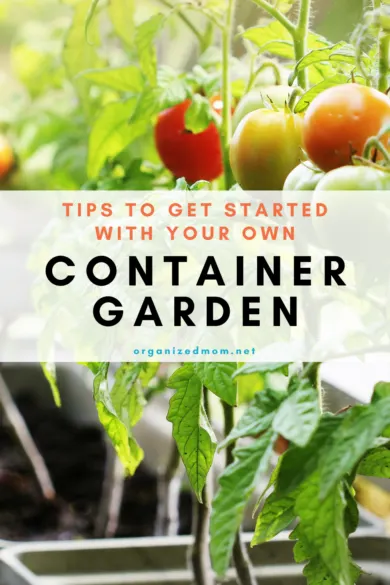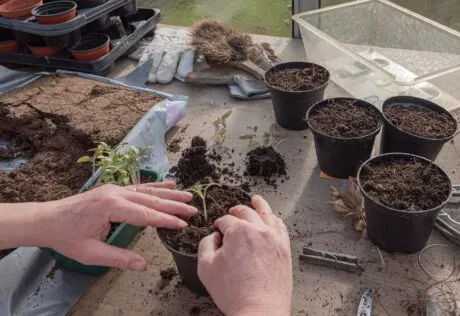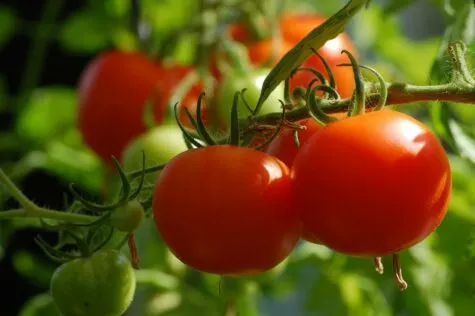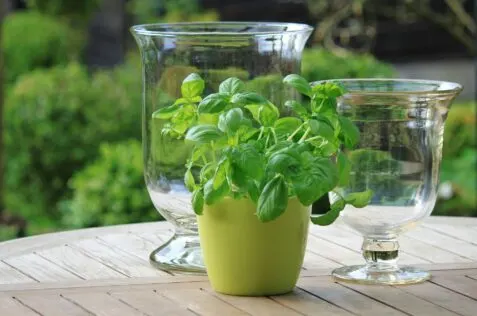Have you ever wanted to grow a vegetable garden but didn’t have the space in your backyard? Or maybe you live in an apartment or condo where you don’t have a backyard to use. Container gardening has become very popular for those living in urban areas or those that only want to grow a few things and don’t want the upkeep of a full garden. We have key container garden tips to get your garden going!
Here are some container garden tips to get you started.
Before we dive into the how-tos, let’s talk about the benefits of container gardening.
You don’t need to have a backyard to do it.
This makes container gardening more accessible to everyone. Even if you don’t have a patio or deck to grow things on, you can still grow small herbs and plants in your kitchen window!
It’s easy to move plants inside.
With a regular garden, once you have planted your seeds in the dirt, there is no moving them! With unpredictable weather, it can be challenging to decide when to plant if you live in a colder climate where temperatures can dip down and cause overnight frosts. If you plant too soon, you run the risk of frost killing your garden.
With container gardening, you can easily temporarily move plants indoors if there is predicted frost, or a huge windstorm, or some other weather event that could cause major damage.
It’s convenient.
When your garden is contained inside your house, or just outside the door, it takes no time at all to quickly water everything. And when your plants are in view, it’s hard to forget about them! I confess that when I have an outside garden on the edge of our lawn, sometimes it goes a few days without water because I get busy and simple forget about it!
With the garden so close to your living space, you can easily see when veggies/fruits/herbs are ready to pick, so you are less likely to let them overripen or stay on the plant too long.
Now that you know the benefits of container gardening, let’s dive into the nitty gritty.
Container tips
You can use a variety of containers, but if you decide to use plastic, you need to use the right kind. Some will leach harmful products into your soil, and you don’t want that! Check the bottom of the container for the type of plastic used. Number 2 plastics are safe to use, but here is a great web-site that goes into this further.
Generally speaking, the bigger the plant, the bigger the container you will need. That is because bigger plants have bigger root systems and you want to make sure the roots have plenty of room to spread out.
Here are some examples of the pot size recommendations for different plants.
5 gallon – tomatoes and squash
3 gallon – peppers, bush beans, herbs
1 gallon – lettuce, carrots, and radishes
You can always plant smaller-rooted plants in bigger pots, but not the other way around!
Keep in mind that the smaller the pot you use, the more often you will need to water. Terracotta pots are porous and tend to dry out the soil more quickly, so I recommend using plastic containers. Oftentimes, restaurants or stores will get items shipped in plastic containers and will give these away for free, so that is good place to check if you don’t want to spend the money on plastic containers.
Soil tips
I recommend using organic potting soil in your containers. This has the right blend of nutrients in the soil to get your plants off to a good start. If you are planting several containers (especially bigger ones) the soil cost can really add up. Here is a hack you can use to save a little money. In the bottom of your 5 gallon bucket, put a few (or more, depending on the size) empty food safe plastic bottles from your recycling stash.
These are bottles made from #1 plastics. They won’t break down and leach into the soil. The bottles help take up space in the bottom of your bucket, so you don’t have to fill the entire bucket with soil. Just make sure you end up with at least 12 inches of soil on top in order to provide enough room for the roots to grow.
Watering tips
Try to water as consistently as possible. Sometimes the soil will appear dry on the surface but there is still plenty of moisture underneath. An easy way to check is to just stick your finger down 2 to 3 inches from the soil. If it is damp, then no extra water is needed. Check again in a couple of days, or daily if it is hot outside.
Here are some tips for growing some of the most popular container plants.
Tomatoes
Tomatoes need a fairly big container to grow and that is why a 5-gallon bucket works great. They also need a lot of water, and a way for the water to drain. An easy way to do this is by drilling holes in the bottom of the 5-gallon bucket.
Container tomatoes also need nutrients that you will need to add to the soil. You can provide these nutrients by mixing gypsum and epsom salt to the soil before you plant. Fill the container about 1/3 full of soil and then add a handful of gypsum and a tablespoon of epsom salt before you plant.
Add soil around your tomato plant up to the leaves. As your tomato plant grows taller, continue to add soil around it. This will help you achieve a very strong root system. Continue adding soil until the soil level is about 2 inches from the top of your container.
Peppers
Peppers love heat, so if you live in a colder climate, you might have to start the seeds indoors and then transplant to a bigger container once it gets warmer.
Squash
Squash seeds are large and flat. If you live in climate that gets lots of rain, plant these seeds vertical instead of horizontally. This allows the water to drain off the seed and not just sit on top of it. Plant 2 seeds in each 5-gallon bucket.
Cucumbers
Believe it or not, it’s not impossible to grow cucumbers in a 5-gallon bucket. Just make sure you get the right kind. There is a small space bush variety that does well in containers.
Strawberries
Strawberries work great in long skinny planters (you can even use a rain gutter if you have enough space for it!) and also work well in hanging baskets. Strawberries send out runners (little long skinny vines that start new plants) and it is a good idea to trim these off so the mother plant gives all it’s energy to making fruit.
Herbs
Herbs are a great thing to grow in containers. As the plant grows, you can just clip off what you need as you need it. Some popular herbs that are easy to grow include cilantro, basil, and mint.
I hope this article will give you some ideas for how to get started with your own container garden. Have fun!



